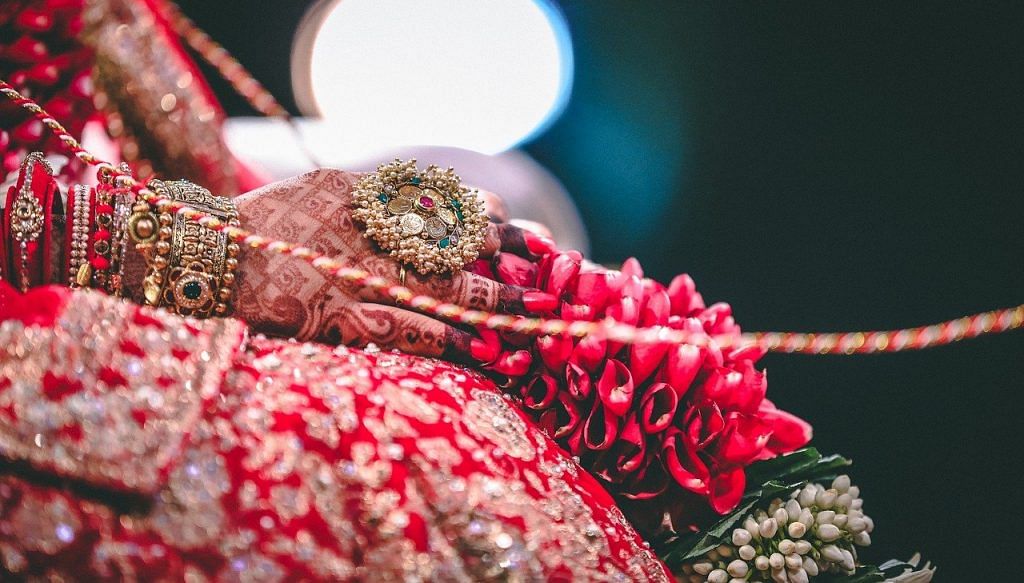First, they came after women from Lady Shri Ram college, then they came after Jawaharlal Nehru University, now they are after women who use too much Facebook, Instagram and Twitter. India’s arranged marriage market is slowly crowding out young women with opinions and a social media handle. Matrimonial apps are now emphasising patriotism, patriotism, and more patriotism.
As the matchmaker Sima Taparia famously says in the very first episode of Netflix’s Indian Matchmaking, in India, marriages are between two families. You might want to laugh this off and believe we have evolved as a society, but as the show and India’s embarrassing history of matrimonial advertisements indicate, it’s unfortunately true.
And what do the family of prospective grooms want? Sanskar, sanskar, and a bit more of sanskar. In the 21st century, if you are a woman who is independent, opinionated, and doesn’t shy away from sharing your views and tweeting your takes on social media, you might as well forget getting into the ‘lucrative’ Indian shaadi bazaar.
If you feel I am being cynical, this matrimonial ad that specifically states that the bride “must not be addicted in (sic) social media” might drive my point home.
Prospective brides/grooms please pay attention.
Match making criteria are changing ? pic.twitter.com/AJZ78ARrHZ
— Nitin Sangwan, IAS (@nitinsangwan) October 3, 2020
Also read: Netflix’s ‘Indian Matchmaking’ is only too accurate
A virtual life of one’s own
After the Narendra Modi led government’s move to ban TikTok, many gleefully expressed their support for the decision. But the social media app had been instrumental in empowering and giving a voice to countless Indians, many of whom live on the fringes of society.
In fact it is not just TikTok, social media, in general, has helped women build their own home-grown businesses, keep up-to-date with the latest fashion trends, and have a space they can call their own.
While we can choose to ignore the ‘non-social media user’ criteria as one person’s idiosyncrasy, it really exposes the deep-rooted misogyny that seeks to confine women to only care-taking roles post marriage. Of course, women must not have a voice of her own, especially online — a space that cannot be as easily regulated like the interiors of one’s home.
Also read: Coy and in ‘ghoonghats’, these women are taking over Youtube, TikTok with their rural lives
‘Tall, slim and fair’
The hallmark of any truly Indian matrimonial ad are three words — ‘tall, fair and slim’. A bride’s height is negotiable, because ultimately the husband must always be taller but the other two criteria remain crucial.
In 2010, the prime time Hindi soap Sapna Baabul Ka…Bidaai decided to take on the issue of colourism. Only a decade later did major companies such as Johnson & Johnson and Hindustan Unilever even begin to acknowledge how the branding of ‘fairness’ creams in India play an influential role in reinforcing regressive stereotypes of beauty, of which women face the heaviest brunt.
Also read: Refusal to wear sakha, sindoor signals woman’s unwillingness to accept marriage: Gauhati HC
The perfect, uncontroversial bride
A newspaper matrimonial ad from earlier this year features a 31-year-old dentist who wants an ‘extremely patriotic’ life partner. The ad states that his prospective bride must have a “keen desire to increase India’s military and sports capabilities”. It is interesting to note that grooms can post such ads in the first place. They clearly don’t see the long list of ‘requirements’ as problematic in any way.
Besides, ‘flexibility’, as the now-viral meme from Indian Matchmaking reminds us, is the USP of a woman looking for a good match. Never mind the guy’s credentials. Flexibility, of course, is simply a synonym for someone who is ‘pliable’. This is why ‘highly educated’ bahus from well-reputed institutes are a big no-no. This matrimonial ad from the ’90s illustrates this perfectly.
While an educated woman is preferred, how educated and from where is a major factor to consider. Despite the illustrious achievements of alumni of colleges like LSR, JNU, and Miranda House, as mentioned in the post, graduates from these institutes were once apparently at a disadvantage when they entered the Indian marriage market.
This only goes to show that according to Indian families, the more independent a woman is, the more likely she is to question patriarchal norms and rituals, hence, might be ‘risky’ for the family.
Ultimately, it is sanskari and ‘flexible’ bahus that hold families and the patriarchy together, don’t they?
Views are personal.
